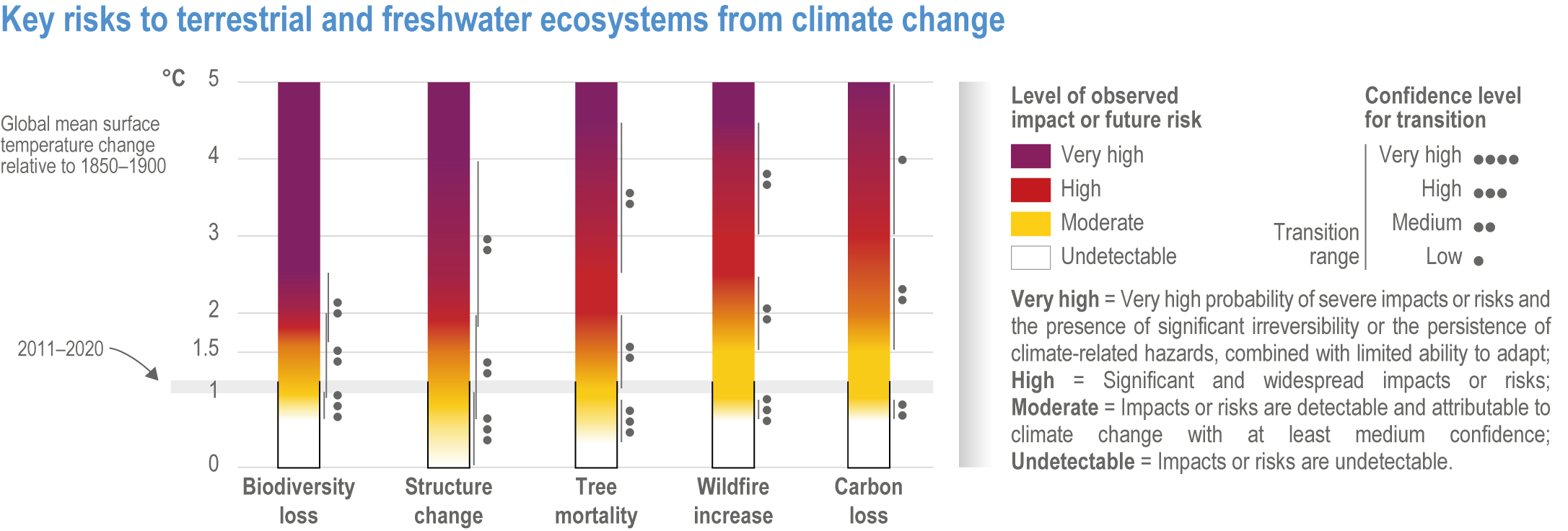Figure 2.11
Figure caption
Figure 2.11 | Key risks to terrestrial and freshwater ecosystems from climate change. This IPCC chapter assesses these as fundamental risks of climate change to ecosystem integrity and the ecosystem services that support human well-being, based on observed impacts and future risks of: (far-left) “biodiversity loss” refers to losses of animal and plant species from different ecosystems globally, with resulting declines in ecosystem integrity, functioning and resilience (Section 2.4.2.1, 2.4.2.2, 2.5.1.3.3); (middle-left) “structure change” refers to major changes occurring in ecosystem structure (Sections 2.4.3, Box 2.1, 2.5.2, Figure 2.9, Figure Box 2.1.1, Table Box 2.1.1, Table SM2.5); (middle) “tree mortality” refers to tree mortality exceeding natural levels (2.4.4.3, 2.5.3.3); (middle- right) “wildfire increase” refers to wildfire exceeding natural levels (Section 2.4.4.2, 2.5.3.2); (far-right) “carbon loss” refers to ecosystem carbon losses that could occur abruptly and substantially raise atmospheric carbon dioxide (Sections 2.4.3.6–2.4.3.9, 2.4.4.4, 2.5.2.6–2.5.2.10, 2.5.3.4, 2.5.3.5). This burning embers diagram shows impacts and risks in relation to changes in GSAT, relative to the pre-industrial period (1850–1900). Risk levels reflect current levels of adaptation and do not include more interventions that could lower risk. The compound effects of climate change, combined with deforestation, agricultural expansion and urbanisation as well as air, water and soil pollution and other non-climate hazards could increase risks. Tables 2.5 and SM2.5 provide details of the key risks and temperature levels for the risk transitions.
